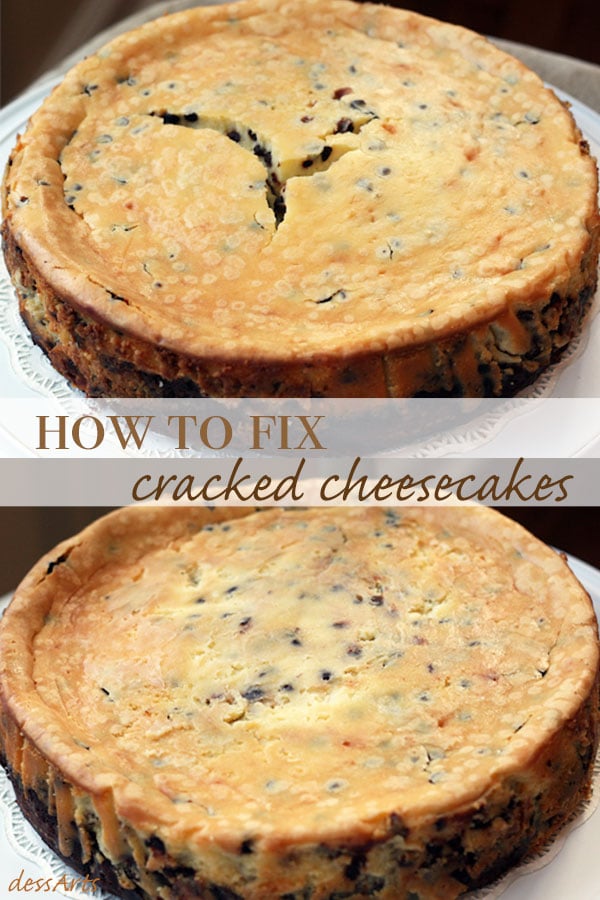Cheesecake, the delectable dessert known for its creamy texture and rich flavor, can sometimes fall victim to a vexing culinary mishap: cracks. These unsightly fissures can mar the presentation and compromise the delightful experience. In this comprehensive guide, we will explore the reasons behind cracked cheesecake and delve into effective strategies for prevention and repair.

Image: www.dessarts.com
Before delving into the realm of prevention and repair, it is essential to understand the culprit behind these unwelcome cracks. Overbaking, abrupt temperature fluctuations, and improper cooling are amongst the primary causes of this baking misadventure. Armed with this knowledge, let us embark on our journey to ensure a flawless cheesecake every time.
Prevention: A Stitch in Time
Overbaking: The Bane of Cheesecake Perfection
Overbaking wreaks havoc on cheesecakes, causing them to overset and develop cracks. The key to preventing this is precision and attentiveness. Utilize a toothpick test: insert it into the center of the cheesecake; if it comes out clean or with just a few moist crumbs attached, your masterpiece is ready to emerge from the oven.
Temperature Fluctuations: The Silent Enemy
Sudden temperature changes, be it during baking or cooling, can instigate cracking. Avoid opening the oven door frequently while baking, as this invites unwanted air currents. Once baked, allow the cheesecake to cool gradually in the oven with the door slightly ajar. This allows the heat to dissipate slowly, preventing stress fractures from forming.

Image: www.pinterest.com
Improper Cooling: A Critical Step Overlooked
Impatience can lead to disappointment when it comes to cooling cheesecakes. Allow your creation to cool in the oven for an hour before transferring it to the refrigerator. This gradual cooling process helps the cheesecake set evenly, minimizing the risk of cracks.
Repair: Transforming Tragedy into Triumph
Filling the Abyss
If cracks persist despite your best preventive efforts, fear not. We now turn to the art of repair. For small cracks, a simple mixture of sour cream or Greek yogurt and powdered sugar, applied with a pastry brush, can work wonders. For larger cracks, a dollop of whipped cream or a layer of fresh fruit can effectively conceal the flaws.
Cover-Up Techniques
If concealment is your goal, employ a flavorful topping such as a fruit compote, chocolate ganache, or whipped cream. Alternatively, a crumble topping can add both visual appeal and texture. These delectable toppings will effectively mask any remaining cracks, transforming your cheesecake into a culinary masterpiece once more.
FAQ: Unraveling the Enigmas
Overbaking and abrupt cooling are the primary culprits.
Yes, a water bath creates a humid environment that helps prevent overbaking and promotes even cooking.
Larger cracks may require filling with a mixture of sour cream and powdered sugar or plugging with decorative toppings.
How To Fix Cracked Cheesecake
Conclusion
Cracked cheesecakes, while disheartening, are not insurmountable. By understanding the causes and implementing the preventive measures outlined above, you can significantly reduce the likelihood of encountering this culinary setback. Should cracks occur, the repair techniques provided empower you to restore your cheesecake to its former glory. With patience, precision, and a touch of creativity, you can conquer the challenge of cracked cheesecakes and create delectable desserts that delight every palate.
We invite you to share your cheesecake experiences, both triumph and mishaps, in the comments below. Your insights and questions will contribute to our collective culinary wisdom.







